Do you have a question about the Parkside PSGS 120 A1 and is the answer not in the manual?
Defines the specific welding processes the device is designed for.
Lists all included components and accessories for the welder.
Identifies and labels each part of the welding device with corresponding numbers.
Provides key technical data such as power input, voltage, current, and weight.
Details significant dangers associated with electric arc welding operations.
Outlines crucial safety measures specifically for using the welding mask.
Warns about hazards from electromagnetic fields, especially for individuals with implants.
Safety guidelines for operating the device in environments with higher electrical risks.
Addresses risks when multiple welding power sources are operated simultaneously.
Safety considerations and precautions for welding in confined or restricted areas.
Specifies necessary protective clothing to ensure welder safety and prevent burns.
Measures to shield eyes and skin from arc radiation and hot metal.
States the device's classification for electromagnetic compatibility and potential interference.
Steps for assembling the welding mask and preparing the device before operation.
Instructions for correctly assembling the welding mask components.
Procedure for safely connecting the gas cylinder to the pressure regulator.
Steps to connect the device for flux-cored welding using inert gas.
Steps to connect the device for flux-cored welding without external inert gas.
Detailed guide on how to load flux-cored wire into the device.
How to safely power the welding device on and off.
Setting the device to MIG/MAG mode for flux-cored welding.
Adjusting the welding current based on material, wire, and desired penetration.
Fine-tuning wire feed speed for a stable and consistent welding arc.
General operation of the welding process, including overload protection.
Techniques for creating weld seams, including forehand and backhand methods.
Explains common weld joint types like butt and fillet welds.
How to perform butt welds, including edge preparation for different material thicknesses.
Simple preparation steps for performing welds on the outer edges of materials.
Guidance on making flat butt welds without interruption and with proper penetration.
Details the terms, duration, and requirements for the product warranty.
Clarifies warranty period extension and the process for reporting defects.
Specifies what the warranty covers, including exclusions for wear and misuse.
Instructions for submitting a warranty claim to ensure prompt resolution.
Provides contact details and procedures for obtaining service or support.
Defines the specific welding processes the device is designed for.
Lists all included components and accessories for the welder.
Identifies and labels each part of the welding device with corresponding numbers.
Provides key technical data such as power input, voltage, current, and weight.
Details significant dangers associated with electric arc welding operations.
Outlines crucial safety measures specifically for using the welding mask.
Warns about hazards from electromagnetic fields, especially for individuals with implants.
Safety guidelines for operating the device in environments with higher electrical risks.
Addresses risks when multiple welding power sources are operated simultaneously.
Safety considerations and precautions for welding in confined or restricted areas.
Specifies necessary protective clothing to ensure welder safety and prevent burns.
Measures to shield eyes and skin from arc radiation and hot metal.
States the device's classification for electromagnetic compatibility and potential interference.
Steps for assembling the welding mask and preparing the device before operation.
Instructions for correctly assembling the welding mask components.
Procedure for safely connecting the gas cylinder to the pressure regulator.
Steps to connect the device for flux-cored welding using inert gas.
Steps to connect the device for flux-cored welding without external inert gas.
Detailed guide on how to load flux-cored wire into the device.
How to safely power the welding device on and off.
Setting the device to MIG/MAG mode for flux-cored welding.
Adjusting the welding current based on material, wire, and desired penetration.
Fine-tuning wire feed speed for a stable and consistent welding arc.
General operation of the welding process, including overload protection.
Techniques for creating weld seams, including forehand and backhand methods.
Explains common weld joint types like butt and fillet welds.
How to perform butt welds, including edge preparation for different material thicknesses.
Simple preparation steps for performing welds on the outer edges of materials.
Guidance on making flat butt welds without interruption and with proper penetration.
Details the terms, duration, and requirements for the product warranty.
Clarifies warranty period extension and the process for reporting defects.
Specifies what the warranty covers, including exclusions for wear and misuse.
Instructions for submitting a warranty claim to ensure prompt resolution.
Provides contact details and procedures for obtaining service or support.
| Input voltage | 230 V |
|---|---|
| Welding current | 20 - 120 A |
| Electrode diameter | 1.6 - 3.2 mm |
| Rated welding current | 120 A |
| Max. electrode diameter | 3.2 mm |
| Protection class | IP21S |

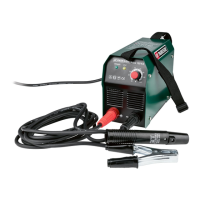
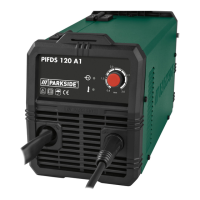

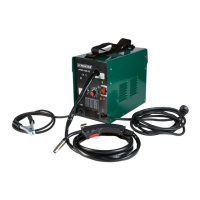
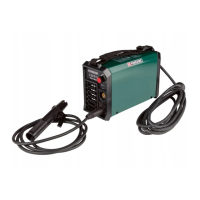
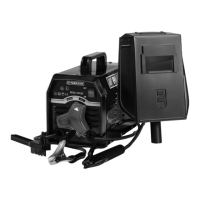


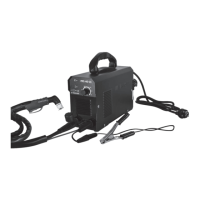
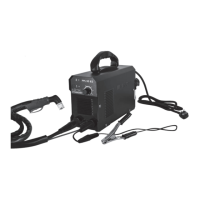

